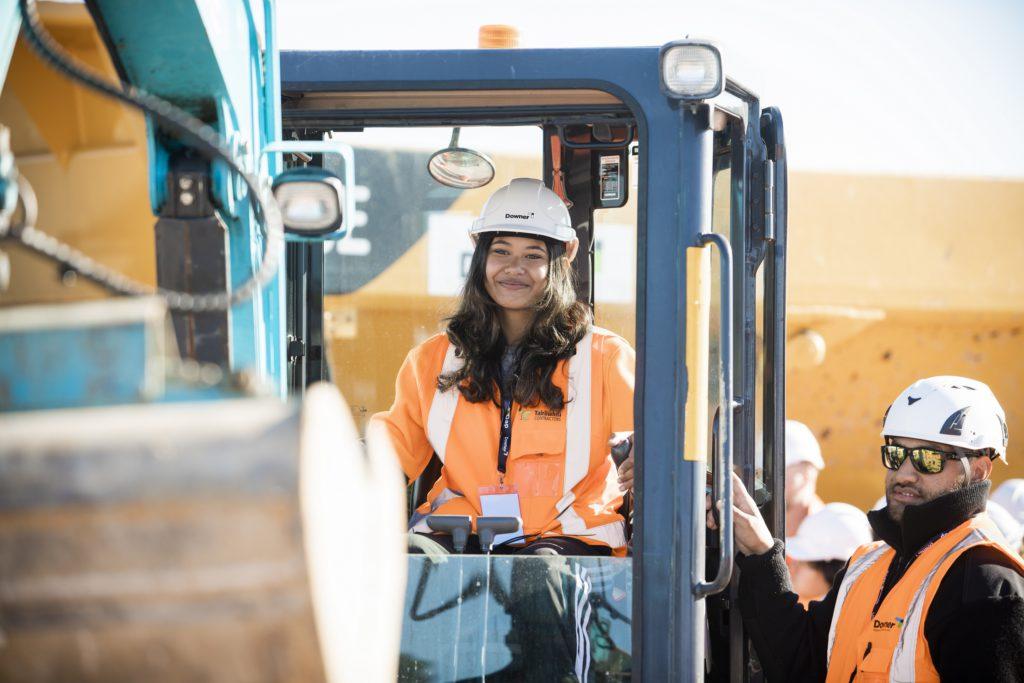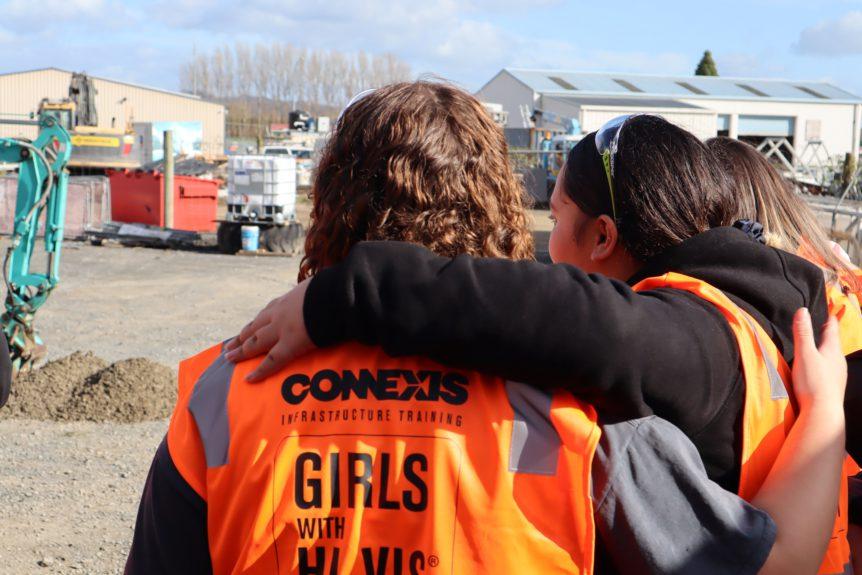By Kaarin Gaukrodger, Executive Director, Connexis | Te Pūkenga
Young women must be a key part of our efforts to address skills shortages in infrastructure.
It’s not a new idea for us at Connexis | Te Pūkenga as a leading provider of vocational training in the civil, energy, telecommunications and water sectors. I’m also happy to say it is no longer a revolutionary or new idea for employers across those sectors as they recognise young women as a critical part of the workforce when it comes to filling skills gaps and addressing industry sustainability.
The people we now have to sell that idea to are the young women; not because they are not interested, but simply because we have not been visible enough. If we are to effectively address critical skills shortages within infrastructure industries, we must be highly visible precisely where and when young people, including young women, are making crucial career decisions.
Boosting our visibility, and helping young women recognise the opportunities the infrastructure industry can offer them, will come down to showing as well as telling.

In June every year, Girls with Hi-Vis® (GWHV) aims to do just that. Led by Connexis as part of our Ultimit – Women in Infrastructure initiative, GWHV offers female high school students the opportunity to visit infrastructure employers and sites in their local region where they are given hands-on experience, fixing technical issues, working with specialised tools, and operating heavy vehicles or machinery. They also hear directly from other women already working in the sector about their experiences.
The events also provide opportunities for the students to build relationships with key employers in their local area and for those local businesses to connect with the next generation of workers. But perhaps most importantly GWHV opens students’ minds to the possibility of a career in infrastructure, to be involved in large-scale projects, constructing major assets, operating big machinery, developing technical solutions and most importantly to keeping New Zealanders connected, healthy and moving. They also recognise the opportunity to do the vital day-to-day maintenance and repairs that directly benefits their whānau and local community – just as we’ve seen as the different regions around the country recover from major weather events.
The success of GWHV has grown consistently over the past eight years and we are now seeing students who had attended an event, now employed in companies and helping to host events. This year is set to be our largest yet with more than 30 events scheduled across the motu and hundreds of students due to attend. This shows our industry’s remarkable effort to involve more women in the infrastructure workforce to address the skills shortage and promote innovation that will be critical to meeting industry’s future needs.
This year, for the first time, we have also partnered with other divisions of Te Pūkenga to take GWHV into the building and construction sector with BCITO, and specialist trades such as plumbing, drainlaying and gasfitting and electrical through EarnLearn. That represents an impressive mobilisation within our industry to engage with women, who still make up only a small percentage of the infrastructure workforce. We are confident GWHV can demonstrate to these young women the scope of opportunities available from hands-on work in the field to management opportunities and leadership.


